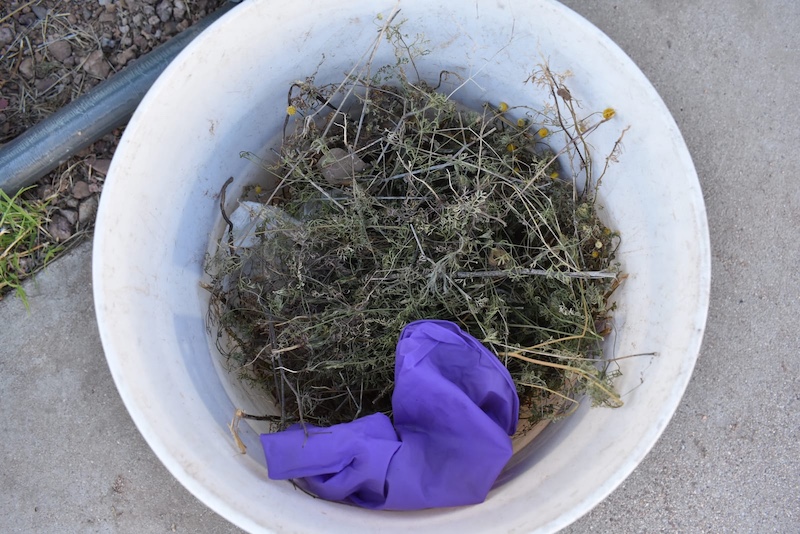If you’re like me, the sight of weeds sprouting up in your garden can be a bit frustrating. They seem to appear out of nowhere, spreading like, well, weeds! But here’s the good news: not all weeds are your enemies. In fact, some of them can make a lovely contribution to your compost pile! Yes, you can compost weeds, but like anything in the garden, there are some rules to follow to ensure you’re not creating more work for yourself down the line.
As someone who’s spent plenty of time in the garden and, let’s be honest, in the compost bin too, I’m here to help you sort out which weeds belong in your compost and which ones are better off taking the long walk to the trash bin.
What Makes Weeds Compostable?
Before we dive into the specifics, let’s talk about compost in general. It’s like Mother Nature’s recycling program, turning organic waste into nutrient-rich soil that helps your garden thrive. Most weeds are green, organic matter, and guess what? That’s basically the foundation of a great compost pile! However, the trick is knowing which ones can be safely tossed into your compost heap without wreaking havoc.
The key to making weeds compostable is to ensure they won’t regenerate once they’ve been added to your compost. This means you need to compost them in a hot enough environment to kill off seeds and roots.
Weeds You Can Compost (With Confidence!)
Now let’s get into the fun part! Which weeds can you actually compost without worrying about them sprouting up again next season? Drumroll, please…
- Dandelions – Yes, the infamous dandelions! While they may seem like your garden’s worst nightmare, they’re totally compostable. Just make sure you remove their roots properly and don’t let them go to seed. The flowers and leaves are great additions to your compost, offering rich nitrogen to balance things out.
- Clovers – If you’ve got clovers popping up in your yard, rejoice! Clovers are excellent nitrogen fixers and will enrich your compost. Simply chop them up and add them to your pile. As long as you don’t allow them to flower, you’re good to go!
- Thistles – Thistles might seem like a tough customer, but as long as you make sure the roots and seeds are well-buried in a hot compost pile, they’re compostable. The heat in the pile will usually kill off the seeds, preventing a thistle invasion next season.
- Creeping Charlie (Ground Ivy) – Creeping Charlie, also known as ground ivy, is a common weed in many gardens. As long as you’ve got a hot compost pile, it’s totally compostable. Just don’t let it go to seed!
- Lamb’s Ear – With its soft, silvery leaves, lamb’s ear is one of those weeds that can be composted with ease. It breaks down quickly and adds a nice texture to your compost.
- Chickweed – Chickweed is a low-growing weed that’s easy to pull, and it adds great material to your compost. As with others, make sure it’s not flowering when you toss it in!
- Pigweed – While this one might sound a bit odd, pigweed can also be composted. Like other weeds, if you prevent it from going to seed, it’ll break down in your compost pile without any issues.
Weeds You Should Avoid Composting
While most weeds are compostable, there are a few troublemakers that could cause you more harm than good in your compost pile. These are the weeds that can survive the composting process and potentially show up in your garden again.
- Bindweed – Bindweed is like that sneaky friend who keeps coming back no matter how many times you tell them to leave. Its roots and seeds can survive in compost, so it’s best to toss this one in the trash.
- Nutsedge – Nutsedge is another persistent weed with tubers that can withstand the composting process. These little guys will pop up in your garden again if you compost them, so it’s best to avoid them.
- Japanese Knotweed – Japanese Knotweed is a tough plant to get rid of, and composting it is a risky move. Its deep roots and ability to regenerate make it a candidate for the trash bin instead of your compost pile.
- Queen Anne’s Lace – While this lovely weed looks harmless, its seeds can last for years. It’s better to toss Queen Anne’s Lace in the trash unless you can ensure your compost pile is hot enough to kill the seeds.
Composting Tips for Success
- Heat is Key: For weeds to break down properly and not come back to haunt you, your compost pile needs to reach a temperature of 130–160°F (54–71°C). If you’re unsure about the temperature, invest in a compost thermometer to track your pile’s heat.
- Chop It Up: The smaller the pieces, the faster they decompose. When you add weeds, chop them into smaller bits to help the process along.
- Add Layers: Alternate between green (weeds, grass clippings) and brown (leaves, straw) materials in your compost to balance the nutrients and help things break down faster.
Wrapping Up
So, there you have it! With a little knowledge and some composting savvy, you can turn those pesky weeds into valuable compost for your garden. Remember, the goal is to prevent any seeds or roots from surviving, so keep an eye on your compost temperature, and you’ll be in the clear. Happy composting, and may your garden be forever weed-free (or at least manageable)!
